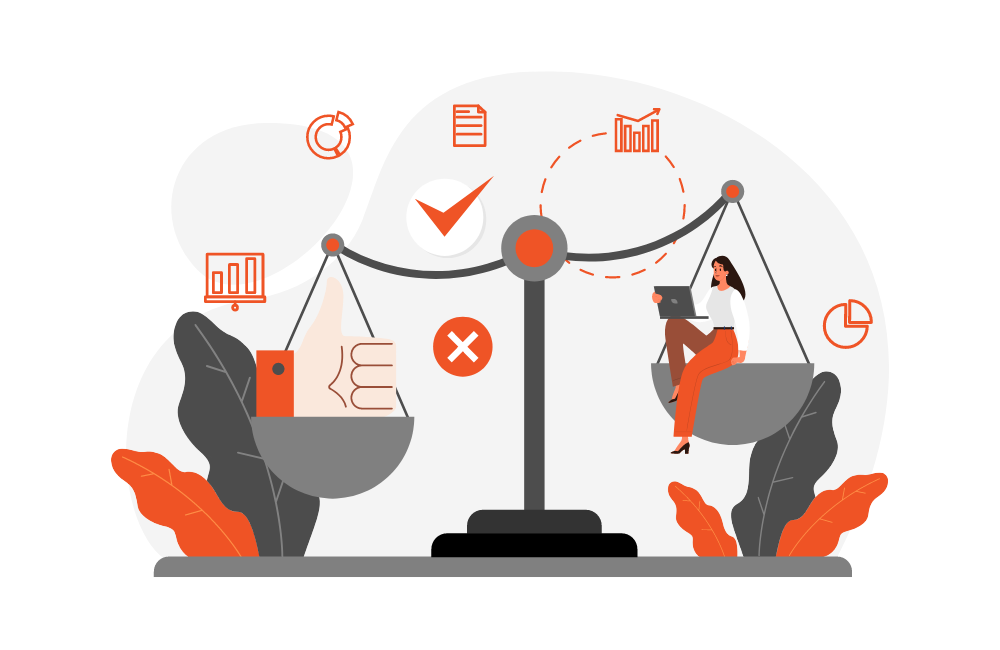- Introduction
- What is Enterprise E-Commerce?
- Choosing the Right Enterprise E-Commerce Solution Platform
- How to Build a Strong Foundation for Your E-Commerce Implementation
- Ensuring a Smooth Launch and Beyond
- Conclusion
- Frequently Asked Questions (FAQs)
Table of Contents
How to Implement Enterprise E-Commerce Solutions Successfully

Introduction
E-commerce enterprise development has revolutionized how businesses operate, offering unprecedented opportunities for growth and efficiency.
From showcasing products to connecting with buyers, managing inventory, and interacting with other businesses, enterprise e-commerce solutions are now indispensable.
Tailored e-commerce development solutions and customized strategies are essential for business owners aiming to thrive in today’s competitive market.
However, implementing enterprise e-commerce solutions successfully is a complex task that requires meticulous planning and execution.
This blog will delve into the critical aspects of implementing enterprise e-commerce solutions, including selecting the right e-commerce platform, designing an efficient order fulfillment process, and addressing every intricate detail to ensure a successful deployment.
What is Enterprise E-Commerce?

Enterprise e-commerce refers to large-scale businesses using advanced enterprise e-commerce solutions to manage a high volume of transactions, complex product catalogs, and diverse customer segments.
These solutions are tailored to meet the specific needs of enterprise-level businesses, providing robust features and scalability to support their operational demands.
Key Differences Between B2B and B2C Enterprise E-Commerce
In enterprise e-commerce solutions, it's crucial to understand the distinctions between business-to-business (B2B) and business-to-consumer (B2C) models.
B2B e-commerce development solutions facilitate business transactions, often involving custom pricing, bulk ordering, and complex procurement processes.
Conversely, B2C customized e-commerce solutions emphasize direct sales to individual consumers, emphasizing user experience, personalization, and omnichannel engagement.
Identifying Your Business Needs and Goals
Before implementing enterprise e-commerce solutions, conducting a thorough assessment of your business requirements and objectives is essential.
This includes evaluating your current e-commerce capabilities, identifying pain points, and setting clear goals for the new solution.
Understanding your unique needs will guide you in selecting the most suitable enterprise e-commerce solution and customization options.
Choosing the Right Enterprise E-Commerce Solution Platform
Exploring the factors and considerations in selecting the most suitable enterprise e-commerce platform for your business.
Open Source vs. SaaS (Software as a Service): Picking Your Model
When considering enterprise e-commerce solutions, businesses must decide between open-source and SaaS models.
Open-source e-commerce development solutions provide flexibility and customizability, allowing businesses to tailor the system to their specific requirements.
On the other hand, SaaS platforms offer a more streamlined approach, with the service provider managing hosting, maintenance, and updates.
Determining the best model depends on factors such as IT resources, scalability needs, and total cost of ownership.
Evaluating Features: Must-Haves vs. Nice-to-Haves for Enterprise Solutions

Selecting the right enterprise e-commerce solution requires examining essential features versus additional functionalities meticulously.
Must-have features might include robust security protocols, advanced product catalog management, multi-channel selling capabilities, and seamless integration with backend systems.
It's important to prioritize customized e-commerce solution features that directly align with your business objectives and customer expectations while remaining mindful of unnecessary bells and whistles that could complicate the system.
Scalability and Integration Capabilities: Future-proofing Your Platform

As enterprise businesses grow and evolve, their enterprise e-commerce solution must accommodate increasing demands and technological advancements.
Scalability is a critical consideration, ensuring that the platform can handle escalating traffic, expanding product catalogs, and evolving business needs.
Additionally, seamless integration capabilities of the e-commerce development solution with enterprise resource planning (ERP), customer relationship management (CRM), and third-party applications are essential for maintaining operational efficiency and data connectivity across the organization.
How to Build a Strong Foundation for Your E-Commerce Implementation
In the rapidly evolving digital landscape, a robust enterprise e-commerce solution is essential for businesses to thrive in the competitive market.
Building a strong foundation is crucial to the success of your e-commerce development solutions.
This section will explore key strategies and best practices that can help you lay the groundwork for successfully implementing a custom e-commerce solution.
Data Migration and System Integration Strategies
Data migration and system integration are critical components of any enterprise e-commerce solution implementation.
It involves transferring existing data from legacy systems to the new e-commerce platform seamlessly.
To ensure a smooth transition, consider the following strategies:
- Assess Your Data: Start by evaluating your existing data's quality, accuracy, and relevance. Cleanse and organize it before migration to avoid data duplication or corruption issues.
- Plan the Migration Process: Develop a comprehensive migration plan that outlines the scope, timeline, and responsibilities within the customized e-commerce solution. Consider engaging experts in data migration to ensure a successful and efficient transition.
- Ensure System Compatibility: Evaluate the compatibility of your current systems with the new enterprise e-commerce solution. Integration capabilities between systems are essential for seamless data flow and process automation.
Optimizing Product Information Management (PIM) for Enterprise Success
Managing and organizing product information in the e-commerce development solution is vital for seamless customer experiences.
Implementing a Product Information Management (PIM) system can streamline this process.
Consider the following tips for optimizing PIM for enterprise e-commerce solution’s success:
- Centralize Product Information: Consolidate all product data into a single, easily accessible PIM system. This will ensure consistency and reduce the risk of outdated or conflicting information.
- Enhance Data Quality: To maintain accurate and up-to-date product information, implement data validation processes and enforce data governance standards in the e-commerce development solution.
- Enable Collaboration: Empower teams across your organization to contribute and update product information. This ensures that the PIM system remains relevant and comprehensive.
Building a User-Friendly and Secure Shopping Experience

Creating a user-friendly and secure shopping experience is key to winning customer trust and loyalty.
Consider implementing the following strategies in your customized e-commerce solution to build a secure customer environment.
- Implement SSL Encryption: Secure Socket Layer (SSL) encryption ensures that data transmitted between your website and customers is encrypted and protected from unauthorized access.
- User authentication: Implement multi-factor authentication and strong password policies in the development of enterprise e-commerce solutions to protect customer accounts from unauthorized access.
- Regular Security Audits: Conduct regular security audits to identify and address potential vulnerabilities within the custom e-commerce solution. Stay updated with the latest security patches and best practices to protect your enterprise e-commerce solution.
Suggested Reading :
7 Ways to Maximize ROI with Custom E-commerce Software Development
Ensuring a Smooth Launch and Beyond
Once you have built a strong foundation for your enterprise e-commerce solution, ensuring a smooth launch and ongoing success is essential.
This section will explore key strategies for a successful launch and long-term maintenance of your e-commerce development solution.
Developing a Go-to-Market Strategy for your E-Commerce Platform
A well-defined go-to-market strategy is crucial for the successful launch of your e-commerce platform. Consider the following steps when developing your strategy:
- Define Your Target Audience: Identify your target market and understand their needs and preferences. This will help tailor your marketing efforts and maximize reach with your enterprise e-commerce solution.
- Create Compelling Content: Craft engaging content highlighting the unique features and benefits of your enterprise e-commerce solution. Utilize search engine optimization (SEO) techniques to improve visibility.
- Leverage Social Media and Influencers: Utilize social media platforms and collaborate with influencers to generate brand awareness and drive traffic to your e-commerce platform.
Importance of Ongoing Maintenance and Security Updates
Maintaining your e-commerce platform's performance, security, and functionality is crucial for long-term success. Consider the following practices for ongoing maintenance:
- Regular Updates and Bug Fixes: Stay up-to-date with the latest software updates and security patches provided by your custom e-commerce solution provider. Regularly test and update your plugins and extensions to ensure optimal performance.
- Performance Monitoring: Continuously monitor your website's performance, including site speed, uptime, and response time. Address any issues promptly to provide a smooth shopping experience for your customers.
- Security Enhancements: Regularly reassess your security measures and implement additional layers of protection as necessary within the enterprise e-commerce solution. Conduct regular security audits and penetration testing to identify and mitigate potential vulnerabilities.
Measuring Success and Optimizing Your Enterprise E-Commerce Platform
Measuring the success of your e-commerce platform is essential for ongoing optimization and growth. Consider the following metrics to track and analyze:
- Conversion Rates: Measure the percentage of visitors who make a purchase. Analyze customer behavior, identify areas for improvement, and optimize the user flow to increase conversion rates.
- Customer Lifetime Value (CLV): Calculate a customer's average revenue over their entire relationship with your business. To drive long-term profits, focus on attracting and retaining high CLV customers.
- User Experience Analytics: Utilize tools such as heatmaps, session recordings, and customer feedback to gain insights into user behavior and identify areas for improvement.
By following these strategies and best practices, you can build a strong foundation for your enterprise e-commerce solution, ensuring a smooth launch and continued success in the evolving digital landscape.
Conclusion
In conclusion, the successful implementation of enterprise e-commerce solutions requires meticulous planning, a deep understanding of business needs, and the adoption of best practices.
From selecting the right platform to ensuring data migration, system integration, and ongoing maintenance, every step plays a crucial role in shaping a robust and scalable e-commerce environment.
Businesses can ensure a smooth launch and long-term success in the competitive online marketplace by prioritizing the business’s long-term goals, user experience, security, and continuous optimization based on key metrics.
Through effective technology integration, streamlined processes, and a customer-centric approach, enterprises can unlock new opportunities for growth and competitiveness in the digital marketplace.
Embracing these strategies will enable enterprises to enhance their competitiveness, drive growth, and meet the evolving demands of the digital landscape.
At AppsRhino, we consider each of your business needs and come up with a solution that meets your long-term business objectives.
We have a team of experts who are well versed in the latest technologies who will help you at every step in the implementation of enterprise e-commerce solutions and even beyond with scaling and other customer care services.
Suggested Reading :
Custom mobile app development: Key to success in e-commerce business
Frequently Asked Questions (FAQs)
What are the key considerations in selecting the right enterprise e-commerce platform?
The key considerations include evaluating the scalability and integration capabilities, comparing open source vs. SaaS models, and prioritizing essential features that align with business objectives and customer expectations.
How can I ensure a smooth data migration and system integration process during e-commerce implementation?
To ensure a smooth data migration and system integration process, assess your data, plan the migration process, and ensure compatibility between your current systems and the new enterprise e-commerce solution.
What strategies can I implement to optimize product information management (PIM) for enterprise success?
Strategies include centralizing product information in a single PIM system, enhancing data quality through validation processes, and enabling collaboration across teams to maintain accurate and comprehensive product information.
How can I create a user-friendly and secure shopping experience for customers?
Implement SSL encryption to protect customer data, enable user authentication with strong password policies, and conduct regular security audits to identify and address vulnerabilities in your enterprise e-commerce solution.
What metrics should I track to measure the success of my enterprise e-commerce platform?
Key metrics to track include conversion rates, customer lifetime value (CLV), and user experience analytics. Analyzing these metrics helps optimize user flow, attract high CLV customers, and identify areas for improvement in the e-commerce platform.
Table of Contents
- Introduction
- What is Enterprise E-Commerce?
- Choosing the Right Enterprise E-Commerce Solution Platform
- How to Build a Strong Foundation for Your E-Commerce Implementation
- Ensuring a Smooth Launch and Beyond
- Conclusion
- Frequently Asked Questions (FAQs)


